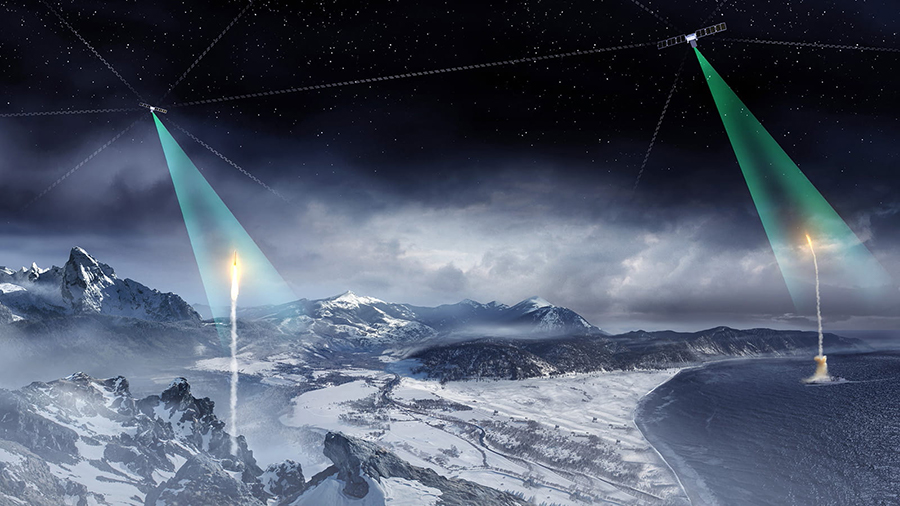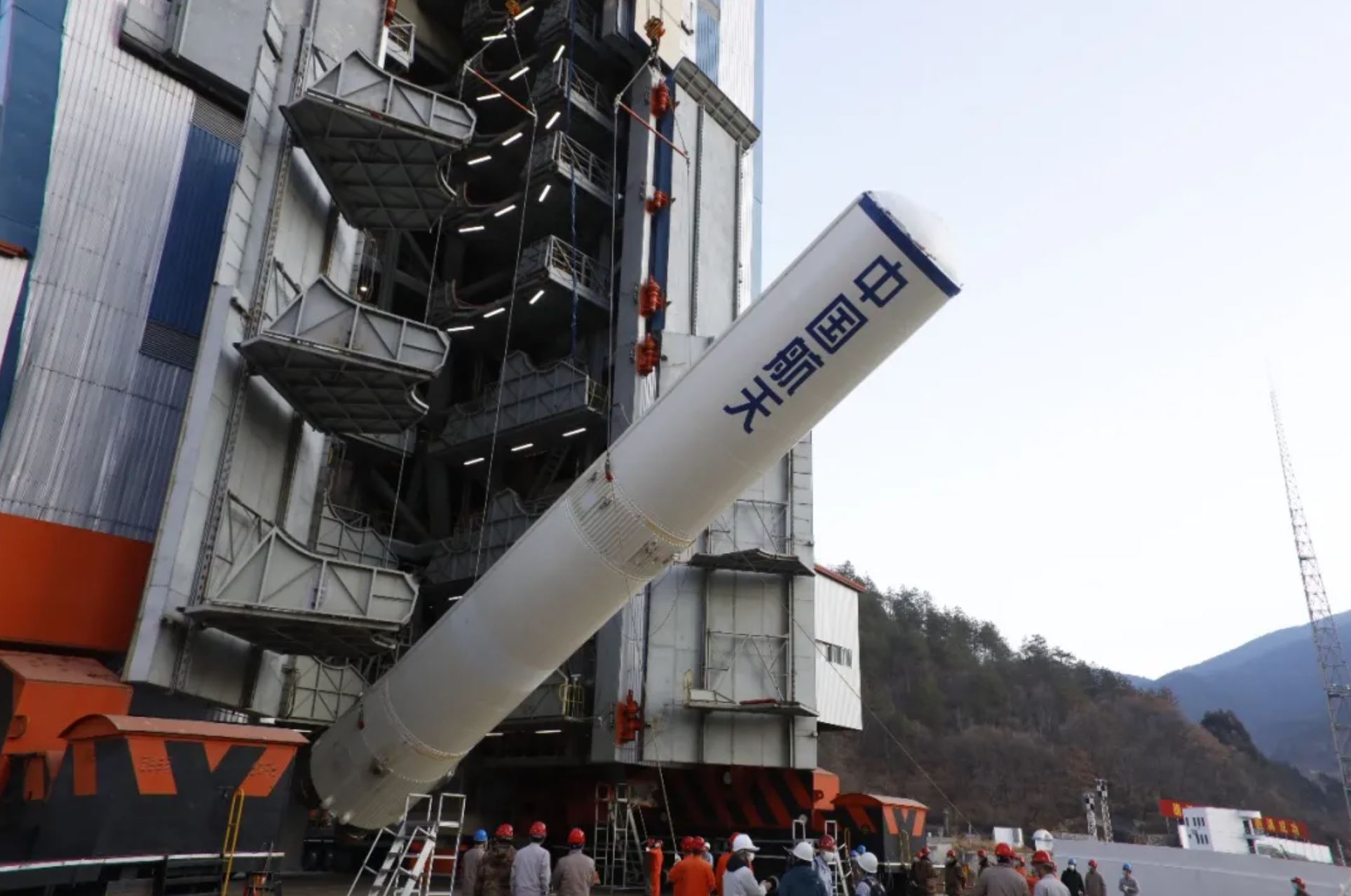
WASHINGTON — The Space Development Agency on Sept. 5 released a solicitation for 54 satellites equipped with infrared sensors capable of tracking hypersonic missiles in all phases of flight.
The satellites will be part of SDA’s Tranche 2 Tracking Layer, a network of satellites in low orbit 1,000 kilometers above Earth. Proposals are due Oct. 5. The agency plans to split the contract among an unspecified number of vendors.
SDA has already acquired four Tranche 0 Tracking Layer satellites from SpaceX, and four from L3Harris. It ordered 14 Tranche 1 satellites from L3Harris, 14 from Northrop Grumman and seven from Raytheon Technologies. To date, only the SpaceX tracking satellites have been launched to orbit.
DoD seeks a proliferated network
SDA, a U.S. Space Force organization, calls its layered network of satellites the Proliferated Warfighter Space Architecture. It includes a Transport Layer of interconnected communications satellites that will transmit data collected by the Tracking Layer missile-detection and early-warning sensor satellites.
Space Force leaders said the Tracking Layer will help augment DoD’s current missile-warning satellites that are at much higher altitudes in geostationary Earth orbits. Officials said DoD will eventually stop buying geostationary satellites that on average take seven years to develop while China is moving to build new constellations at a rapid pace.
“The Tranche 2 Tracking Layer prototyping effort will accelerate the capability to provide global, persistent indications, detection, warning, tracking, and identification of conventional and advanced missile threats, including hypersonic missile systems,” said SDA’s request for proposals.
The request is for 54 satellites but more could be procured, based on available funding, said SDA. They will be deployed in six orbital planes as early as 2027. Each plane will be launched on a single national security space mission on either United Launch Alliance or SpaceX rockets.
“The fully deployed Tracking Layer is estimated to include more than 100 space vehicles in low Earth orbit across multiple planes,” said SDA.
Each satellite will have an infrared sensor payload, optical communications terminals; in addition to Ka-band and S-band communications payloads.
Sandra Erwin writes about military space programs, policy, technology and the industry that supports this sector. She has covered the military, the Pentagon, Congress and the defense industry for nearly two decades as editor of NDIA’s National Defense…
More by Sandra Erwin
Note: This article have been indexed to our site. We do not claim legitimacy, ownership or copyright of any of the content above. To see the article at original source Click Here














